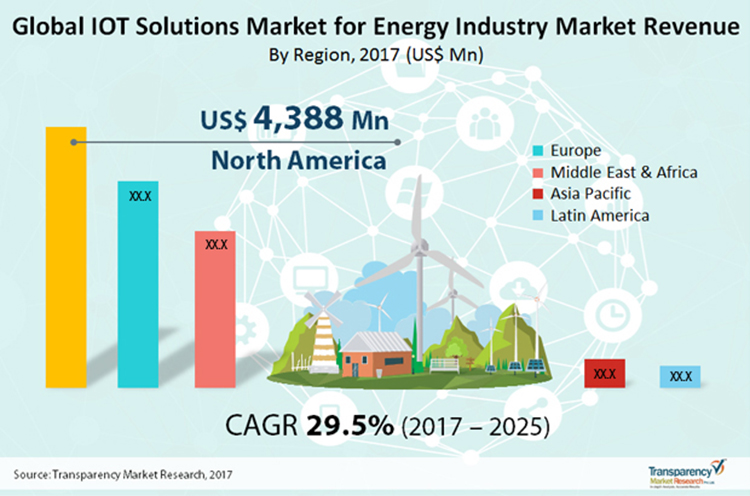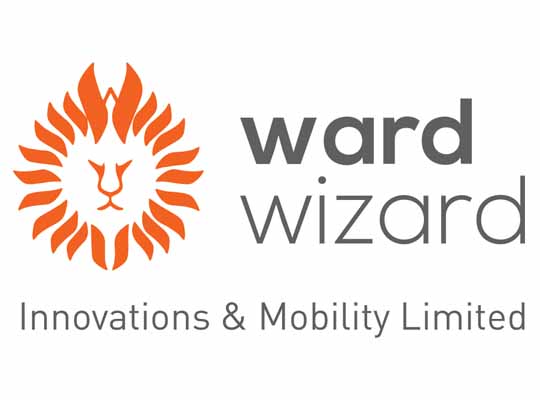Internet of things (IoT)-enabled solutions are getting weaved into smart energy management framework. Globally utility providers and energy producers are expanding their IoT-based asset management capabilities not just to optimize their resources but also to boost process efficiencies. Several industries are pumping in dollars to enrich their supply chain with the IoT paradigm. The oil and gas industry stands to benefit immensely in coming years, for example.
The use cases and applications of IoT has seemingly proliferated in recent years, laying the framework of a modern IT infrastructure in the IoT solutions market for energy industry. The need for state-of-the art data-driven automation system has made IoT as a key enabler for smart energy management. The recurrent propositions are better security, efficiency, and safety of information systems in the energy industry. The growing deployment of smart grids solutions has opened up lucrative applications of IoT in data management and connectivity. Tellingly, companies in end-use industries have leveraged IoT-enabled smart energy meters to optimize energy reduction—anchoring smart behaviors for energy usage. For energy companies the impact is pervasive, both for demand and supply side management.

IoT Underpins Smarter and More Responsive Supply Chain
The role IoT framework plays across the supply chain—ranging from fuel extraction, operation, and maintenance (O&M) of assets, to ultimately transmission and distribution—is the key pivot around which has made energy companies increasingly ebullient. Stridently, organizations in end-use industries are harnessing IoT for real-time monitoring and data collection. The analytics and information that is gleaned, cleaned, and acted upon are promoting productivity and safety of supply chain of the energy sector.
The possibilities are vast: the revenues of the market are projected to advance at CAGR of 29.5% between 2017 and 2025.
Environmental Sustainability of Assets emerges as Key Pivot for Uptake of IoT Solutions
The IoT solutions market for energy industry is poised to redefine environmental sustainability of assets. The outcome has become more noticeable in the adoption of smart grid solutions in various countries to optimize electricity generation and distribution, while making the production and delivery infrastructures more resilient. The ever-rising need for energy for commercial and residential applications globally has made energy companies and governments to hammer on the relentless need for transforming the energy industry on these lines.
Per a statistic by the U.S. Energy Information Administration (EIA), the world’s energy consumption will increase by at least half during 2018 – 2050. The burgeoning energy consumption has stemmed from the rise in demand for energy in various industrial and commercial facilities. Furthermore, temporary power sector has also galloped at a promising pace over the past few years. Thus, utility providers are witnessing substantial opportunities in the demand for temporary power supply for building or construction work, especially emanating from the rise in building or construction work in emerging economies, notably in China and India. Strides in the IoT solutions market for energy industry is thus anchoring the pillars of sustainable power supply.
Europe Highly Lucrative Market, Renewable Energy Integration Top of Agenda of Stakeholders
The IoT solutions market for energy industry are gaining groundswell of attention on another count–renewable energy. In recent years, proponents of reducing carbon footprint are fervently reinforcing efforts to reduce the share of conventional fossil fuels and increase the share of renewables in the mix.
Various stakeholders in the automation of energy production and supply chain are keen on adopting new technological frameworks that help them leverage IoT sensors for remote asset monitoring and management. Companies such as Intel are flexing their muscle in the IoT solutions market for energy industry. Countries such as Finland and several European Union nations have been ceaselessly making efforts to implement modern technologies including IoT, AI, and machine learning, thereby cementing the market prospects in these countries. The focus has led to the commercialization of sensors and computing edge technologies. A case in point is the growing trend of integrating wind energy through sensors to achieve a reliable IoT communication.
Europe as a whole has emerged as a lucrative region in the IoT solutions market for energy industry, with potential revenues in France, Germany, and the U.K.
The IoT solutions market for energy industry are expected to witness some massive revenue gains in oil and gas sector. Smart oil and gas energy IoT solutions for meeting the requirements of security and safety in extraction and transportation of fuels, where the IoT framework sits beneath the software and platforms that manage data in the supply chain.
Need for End-to-End Management of Production & Distribution Assets in Oil & Gas Sector to Impart Steady Tailwind
The proposition of end-to-end management of assets are generating revenue interest among solution providers. They are inclined toward optimizing the entire gas and oil production, notably across rig production, employee safety, and monitoring of health of pipeline. A proactive approach to crisis management is another consumer proposition that intrigue businesses in the upstream oil and gas industry to adopt IoT solutions. A U.K.-based IoT company Telit has been catering to the requirements by expanding their portfolio of solutions under Intelligent Sensing Anywhere (ISA). More such companies will ramp up investments to offer IoT solutions that promotes preventive and fault maintenance in the oil and gas sector.
With spiralling industry buzz around sustainable energy management. The IoT solutions market for energy industry will continue to rev up investments, and will continue to grow in implementation. This stridently will open new frontiers in smart and sustainable energy management.













